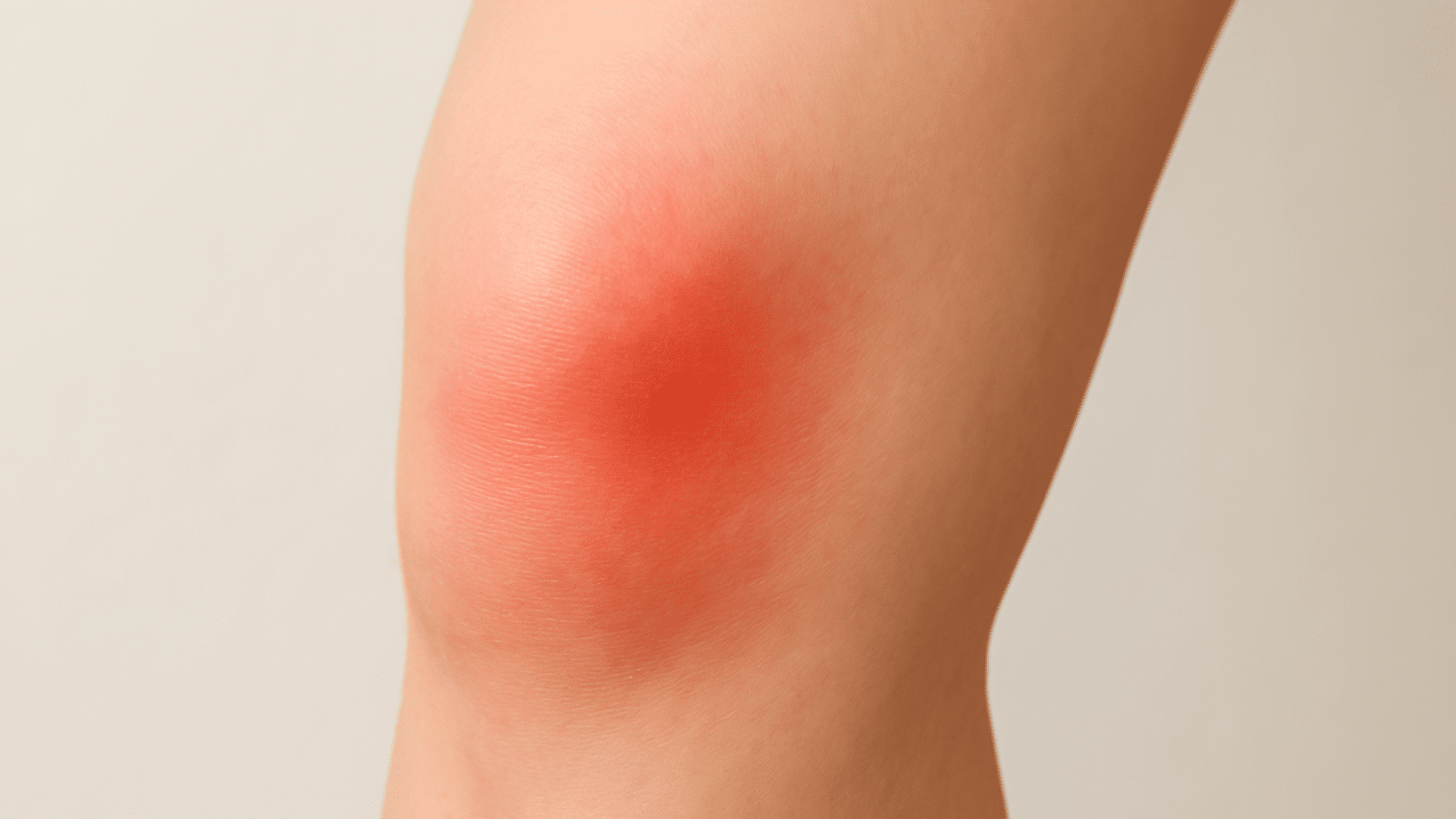Have you ever felt a sudden, sharp pain in your knee cap that made you stop in your tracks? I know how worrying it can feel.
One moment you’re fine, and the next, bending, climbing stairs, or even just walking can bring discomfort.
Many people experience sharp pain under the kneecap, and while it’s common, the causes can vary significantly. Sometimes it’s due to overuse or sports, at other times from an injury or inflammation.
The good news is that most knee cap pain has an explanation, and many cases can be treated or prevented.
In this guide, I will walk you through the possible reasons for sharp knee pain, what symptoms to watch for, and when it’s time to see a doctor.
Understanding Sharp Knee Cap Pain
When you feel a sharp pain in the knee cap, it can show up in different ways. Some people feel it right on top of the kneecap, while others notice sharp pain under the kneecap when moving, bending, or even resting.
Understanding how and where the pain appears can help narrow down the possible causes.
- Pain on top of the kneecap is often linked to overuse or tendon issues
- Pain under the kneecap can be related to cartilage or alignment problems
- Pain that is sudden and stabbing may point to injury or irritation
- Pain that comes and goes is often linked to activity level or certain movements
Paying attention to these patterns is important. It provides doctors (and you) with clues about whether the discomfort is related to tendons, cartilage, or the kneecap itself.
This step makes it easier to connect your symptoms to potential causes.
Common Causes of Sharp Knee Cap Pain
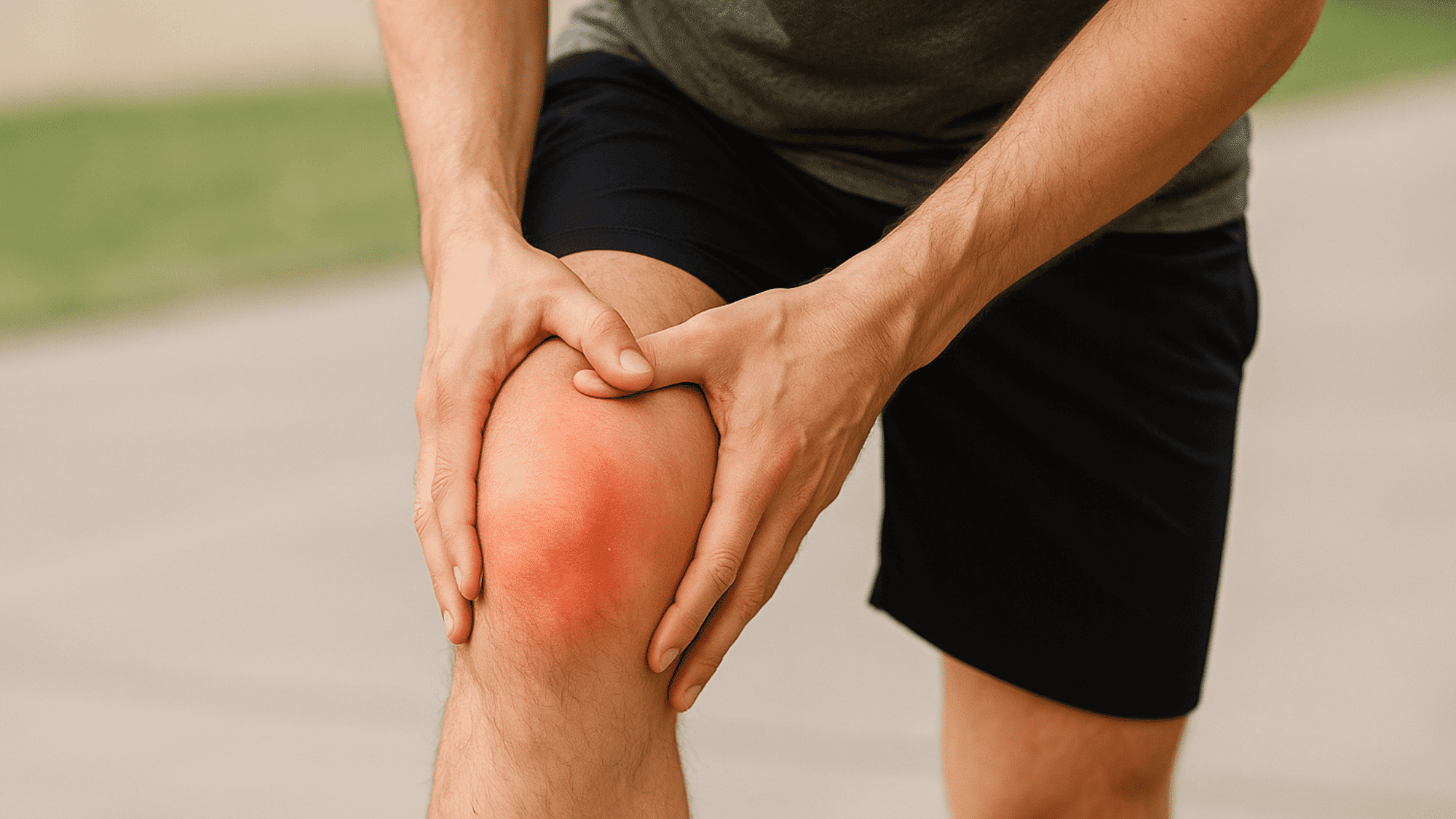
Knee pain can result from various issues. Here are the most common causes that may explain sharp discomfort in or under your kneecap.
1. Patellofemoral Pain Syndrome (Runner’s Knee)
Patellofemoral pain syndrome happens when the kneecap doesn’t glide smoothly over the thigh bone. This misalignment or overuse causes irritation behind or around the kneecap.
People often notice pain when climbing stairs, squatting, running, or sitting for long periods. It may feel sharp under the kneecap during movement and dull at rest. This is one of the most common causes of knee pain.
2. Patellar Tendinitis (Jumper’s Knee)
Patellar tendinitis develops when the tendon connecting the kneecap to the shinbone becomes inflamed. It’s often linked to repeated jumping, running, or sudden changes in activity, which strain the tendon.
Pain usually starts as a sharp ache below the kneecap and worsens with activity. Over time, it may also cause tenderness, swelling, and stiffness, especially after exercise or when kneeling.
3. Meniscus Tear
The meniscus is a piece of cartilage that cushions the knee joint. A sudden twist, awkward step, or injury can cause a tear, leading to sharp or stabbing knee pain.
Symptoms often include swelling, stiffness, or even a locking sensation when trying to bend or straighten the knee. Athletes and older adults are especially at risk for meniscus injuries due to activity or wear and tear.
4. Bursitis
Bursitis occurs when the bursae, small fluid-filled sacs that cushion the knee, become inflamed. This often happens after long periods of kneeling, frequent bending, or direct impact to the knee.
It can cause sharp pain at the front of the knee along with visible swelling and tenderness. Some people also notice warmth or redness around the area, making movement and pressure on the knee uncomfortable.
5. Kneecap Dislocation or Subluxation
A dislocation happens when the kneecap completely slips out of place, while a subluxation is a partial shift. Both can cause sudden, sharp pain along with swelling and instability.
These injuries usually occur during sports, falls, or sudden twisting movements. In some cases, the kneecap may visibly shift or feel unstable, making it difficult to walk or bear weight on the affected leg.
6. Quadriceps Tendinitis
Quadriceps tendinitis affects the tendon that connects the thigh muscles to the kneecap. Overuse, jumping, or activities that put strain on the front of the thigh can irritate this tendon.
The result is sharp or aching pain just above the kneecap, especially when extending the leg. People may also notice tenderness and stiffness that make climbing stairs, squatting, or running more difficult and painful.
Other Possible Causes
Not all sharp knee cap pain comes from sports injuries. Conditions like osteoarthritis can wear down cartilage, causing pain and stiffness. Ligament injuries may create sharp, localized pain during movement.
Iliotibial (IT) band syndrome can cause friction around the knee. In rare cases, sharp knee pain might signal a more serious issue, such as deep vein thrombosis (DVT), which requires immediate medical attention.
Symptoms to Watch For
Recognizing symptoms early can help you determine whether sharp pain in the knee cap is minor or something that requires medical attention. Here are common signs:
- Sharp or stabbing pain in the front or under the kneecap
- Pain that worsens with bending, climbing stairs, or squatting
- Swelling, redness, or warmth around the knee
- Tenderness when pressing on the kneecap or the surrounding area
- Clicking, popping, or locking sensation during movement
- Knee instability or feeling like it might give way
- Pain flare-ups during or after physical activity
Diagnosis: How Doctors Identify the Cause
If you experience persistent sharp pain in the kneecap, your doctor will typically begin by inquiring about your symptoms and daily activities.
They’ll then do a physical exam to check your knee’s range of motion, swelling, or tenderness. Sometimes, imaging or other tests are needed to confirm what’s really going on inside the joint.
| TEST | WHAT IT SHOWS |
|---|---|
| Physical Exam | Checks range of motion, stability, tenderness, and visible swelling in the knee. |
| X-Ray | Detects bone problems like fractures, arthritis, or kneecap misalignment. |
| MRI Scan | Provides detailed images of cartilage, ligaments, and meniscus tears. |
| Ultrasound | Shows soft tissue issues such as tendon inflammation or bursitis. |
| Blood Tests (rare) | Used to rule out infections or inflammatory conditions like gout or arthritis. |
Receiving the correct diagnosis is crucial because treatment depends on the underlying cause. Even if symptoms seem mild, a thorough examination can help prevent the pain from worsening over time.
Treatment Options for Sharp Knee Cap Pain
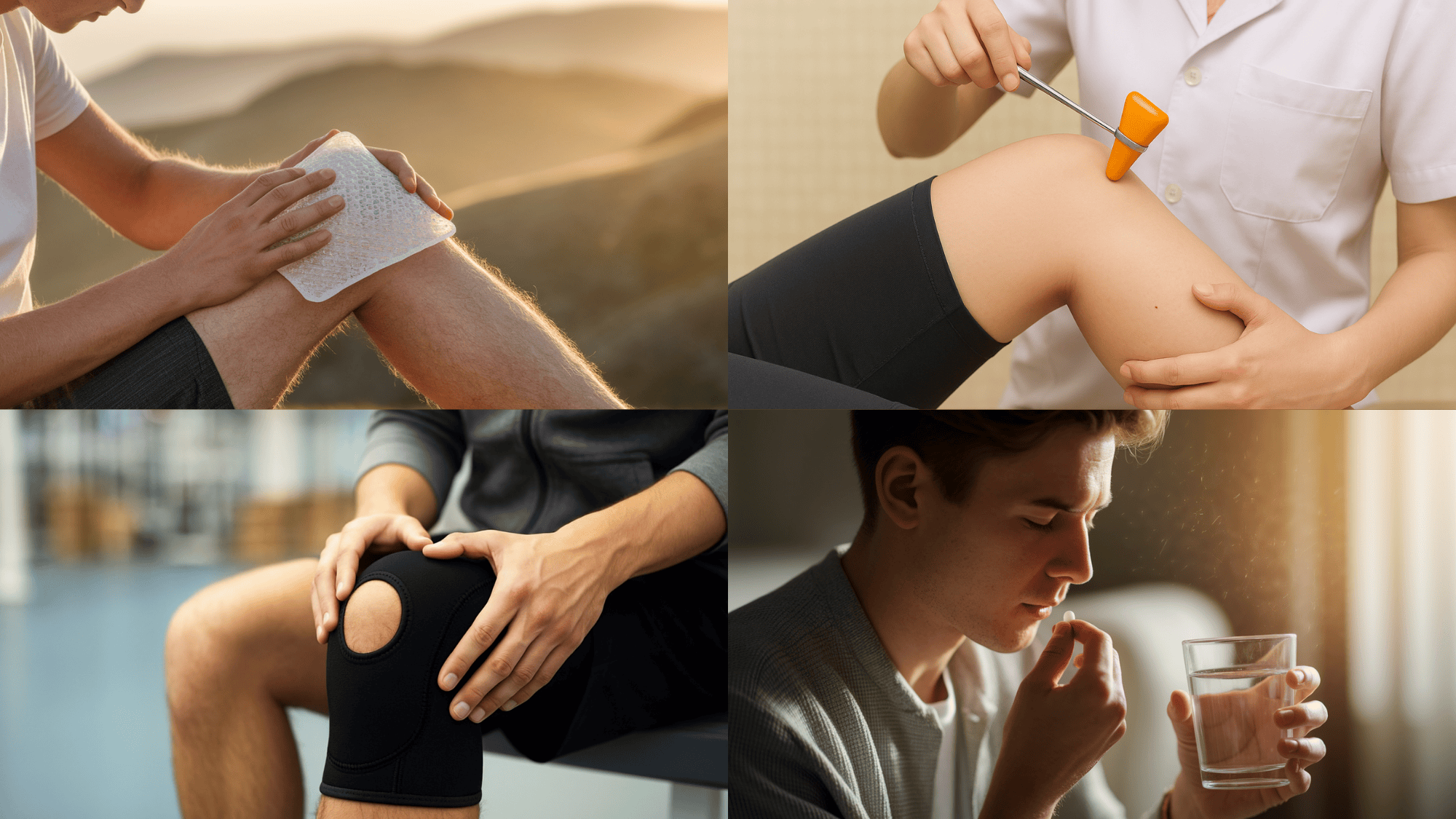
Treating sharp pain in the knee cap depends on what’s causing it. In most cases, treatment begins with simple at-home care and progresses to medical assistance if necessary.
Here’s how treatment typically progresses from the easiest to the most advanced options.
1. Home Remedies (RICE): Most people begin with the RICE method: Rest, Ice, Compression, and Elevation. Resting the knee reduces strain, icing helps with swelling, compression supports the joint, and elevation improves circulation.
2. Over-the-Counter Relief: If discomfort persists, non-prescription pain relievers such as ibuprofen or acetaminophen can help reduce both pain and inflammation. These medications are commonly used for short-term relief, especially after activity.
3. Physical Therapy and Exercise: For ongoing pain, doctors often recommend physical therapy. Strengthening the muscles around the knee, particularly the quadriceps and hamstrings, can boost stability and alleviate pressure on the kneecap.
4. Supportive Aids: Braces, knee sleeves, or supportive shoe inserts may be recommended to improve alignment and reduce stress on the kneecap. Taping techniques can also help guide proper kneecap movement during exercise or daily activities.
5. Medical Procedures: If pain doesn’t improve with conservative treatment, advanced options include corticosteroid injections to quickly reduce inflammation or, rarely, surgery to repair damaged cartilage, ligaments, or a severely injured kneecap.
Exercises to Relieve & Prevent Knee Pain
If you’ve ever felt sharp pain under the kneecap, these exercises can help strengthen your legs, improve stability, and reduce discomfort.
1. Straight Leg Raises
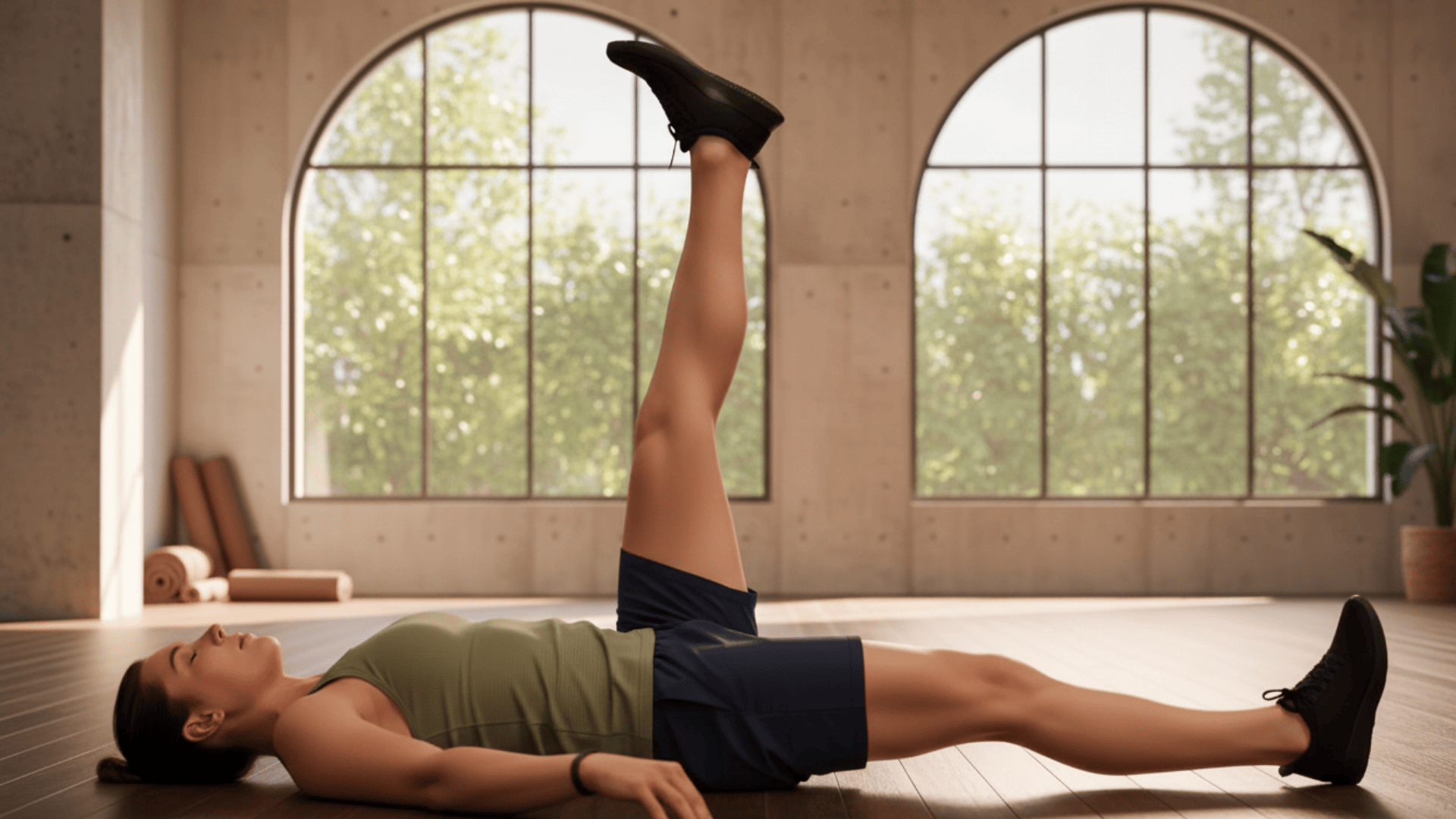
Lie flat on your back with one leg bent and the other straight. Slowly lift the straight leg about a foot off the floor, hold briefly, and lower it back down.
This simple move strengthens the quadriceps without putting strain on the kneecap, making it great for beginners or anyone recovering from pain.
2. Clamshells for Hip Strength
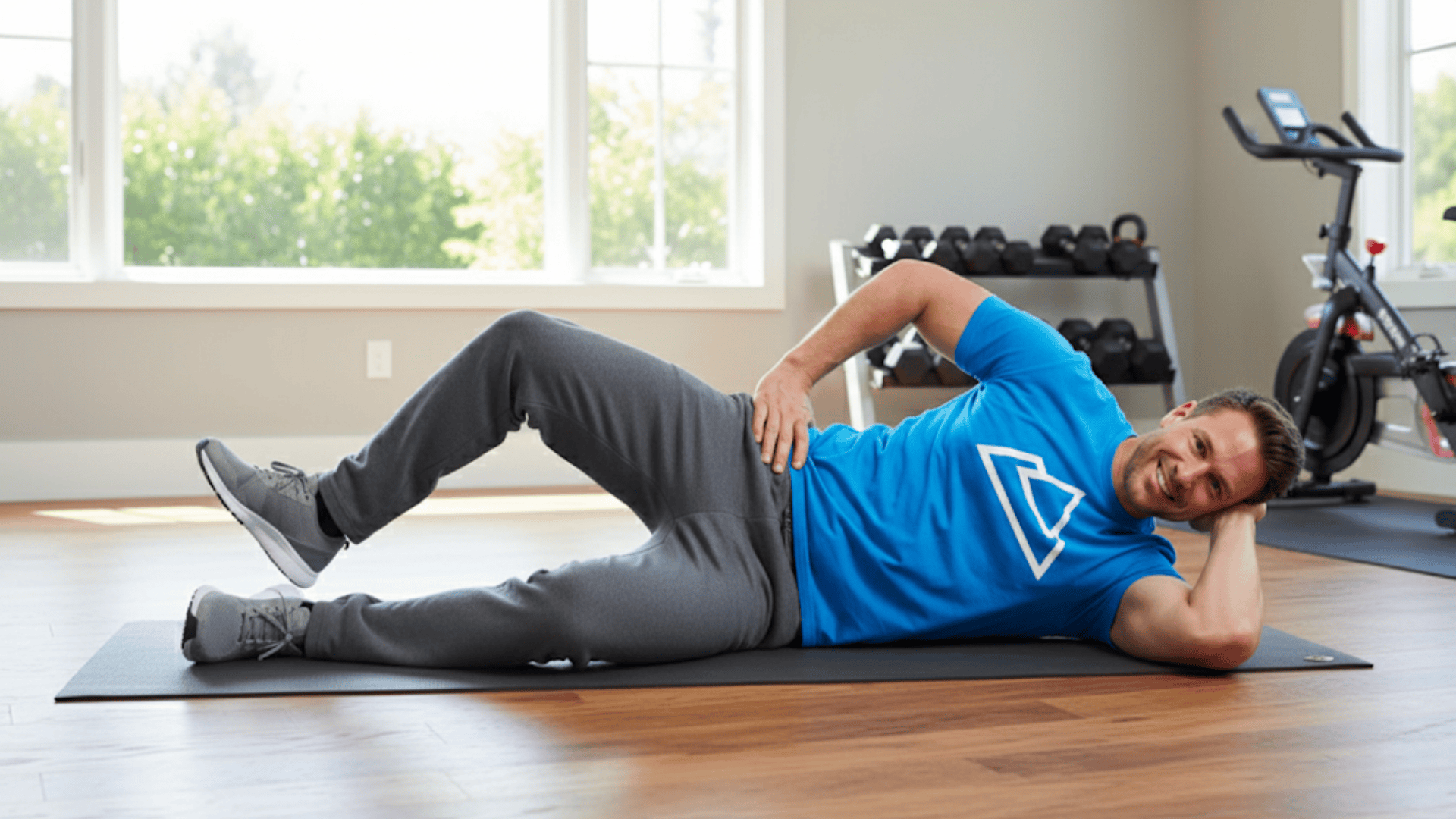
Lie on your side with knees bent and feet together. Keeping your feet touching, lift your top knee open like a clamshell, then close it slowly.
This exercise strengthens your hip and glute muscles, which helps stabilize your knee. Strong hips take pressure off the kneecap, reducing irritation and improving movement during daily activities.
3. Quad and Hamstring Stretches
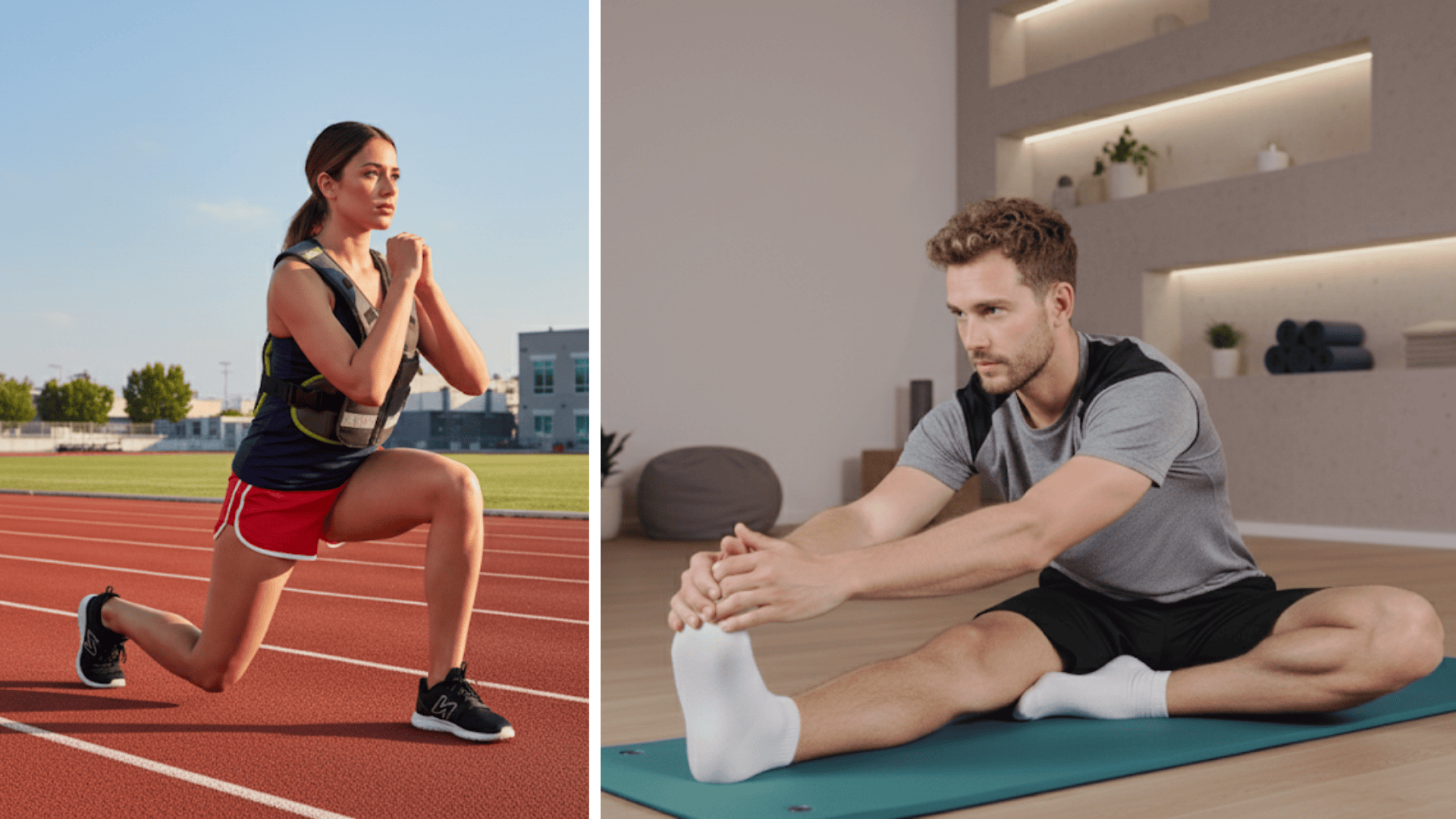
Tight thigh muscles often pull on the kneecap, worsening discomfort. Stretching both the quadriceps (front of the thigh) and hamstrings (back of the thigh) improves flexibility and reduces tension around the knee.
A simple quad stretch involves pulling your heel toward your glutes, while a hamstring stretch means leaning forward with a straight leg.
4. Low-Impact Cardio (Swimming, Cycling)

High-impact workouts like running can stress the knee joint, but low-impact cardio builds endurance and strengthens supporting muscles without excess strain.
Swimming, cycling, or using an elliptical machine are great choices. These activities keep your joints flexible, improve circulation, and support recovery, all while lowering your risk of flare-ups or worsening knee pain.
Prevention Tips
Taking small steps every day can lower your chances of feeling sharp pain in the knee cap or under the kneecap.
Here are some simple tips:
- Strengthen Key Muscles: Build up your quadriceps, hamstrings, and hips for better knee support.
- Stretch Regularly: Focus on the legs before and after activity to keep flexibility.
- Wear Supportive Shoes: Good cushioning and arch support reduce pressure on the knees.
- Avoid Sudden Increases in Activity: Slowly raise exercise intensity to prevent strain.
- Use Proper Technique: Pay attention to posture and movement during workouts or sports.
- Maintain a Healthy Weight: Less weight means less stress on your knee joints.
Taking small, consistent steps can make a big difference in preventing sharp kneecap pain. By incorporating these simple habits into your daily routine, you support healthier, pain-free knees for the long term.
Wrapping It Up
Living with sharp pain in the kneecap can be frustrating, especially when it gets in the way of simple things like climbing stairs or taking a walk.
I’ve learned that ignoring knee pain usually makes it worse, while taking small steps early can make a big difference.
Even if your pain is caused by overuse, an injury, or something more serious, understanding the underlying cause is the first step toward healing.
Remember, your knees carry you every day; treating them with care now can help prevent bigger problems later.
If knee pain keeps recurring, don’t push through it; book an appointment with a doctor or physical therapist today to receive the right care.

